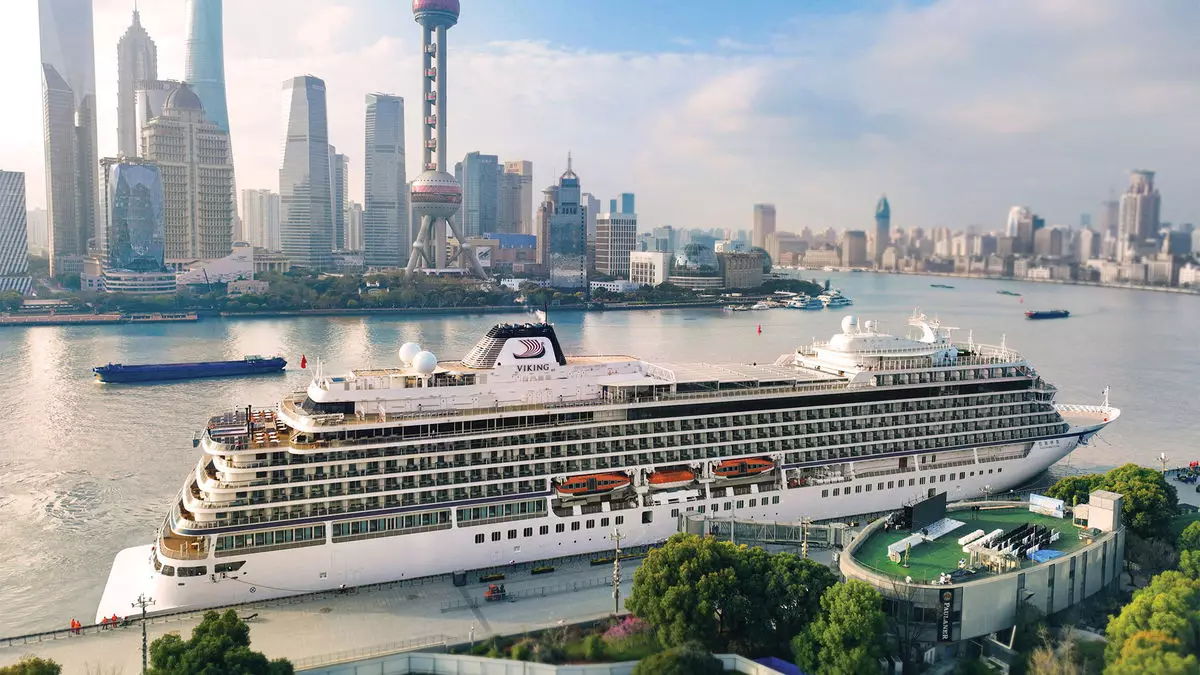The cruise industry is experiencing a remarkable renaissance, and at the forefront of this resurgence is Viking, a brand that has seemingly captured the travel market’s heart and soul. As of May 2023, Viking proudly declared that a staggering 92% of its inventory for 2025 has already been sold out, underscoring its assertive grasp on future bookings. This tremendous achievement speaks volumes about the brand’s appeal and the resilience of its clientele, showcasing just how urgently people are eager to travel again.
Viking’s Chief Financial Officer, Leah Talactac, has boldly stated that with such a high percentage of bookings already secured, the company has effectively filled its sails for the upcoming year. The cruise line’s performance during the first quarter of this year has also been nothing short of extraordinary, reporting a revenue of $897.1 million—a nearly 25% increase compared to the previous year. Such financial success does not simply reflect the recovery of the travel sector; it demonstrates Viking’s adeptness at meeting a growing appetite for luxury travel experiences.
Innovations and Capacity Expansion Fuel Growth
A cornerstone of Viking’s striking growth is its commitment to innovation and fleet expansion. The company has boosted its capacity by almost 15% in the first quarter with the introduction of two new river cruise ships in Egypt, alongside the Viking Vela, an ocean vessel. These additions not only enhance their offerings but also reflect a strategic move to meet increasing demand. With occupancy rates soaring to 93.9% for river cruises and 94.4% for ocean capacity, it is clear that Viking has struck a chord with its travelers.
Moreover, the cruise line has amassed an impressive $5.5 billion in advanced bookings for the current year, alongside an additional $2.7 billion for 2024—up 17% from the same period last year. This statistic solidifies Viking’s stature in an environment where other companies may falter. The brand is not merely weathering economic uncertainties; it is thriving against them, confirming that their customers are financially resilient and inherently devoted to travel.
Strategic Planning and Future Developments
What should intrigue industry analysts and investors alike is Viking’s forward-thinking strategy. The delivery of new ships, such as the Viking Nerthus, set to operate on the Seine River, showcases Viking’s commitment to exploring and expanding globally. The introduction of hydrogen-powered vessels by 2031 signifies an environmental commitment that holds potential appeal for eco-conscious travelers.
In a world where sustainable practices increasingly influence consumer choices, Viking’s foray into cleaner, more responsible travel options could very well position the brand at the forefront of the industry. Additionally, with plans to add a total of 11 new ocean ships to its fleet by 2031, including a sixth ship in Portugal, Viking is not just resting on its laurels. The intricately designed itineraries, along with the expansion into new regions, ensure that the company’s offerings will continue to allure and excite its target market.
While challenges still exist within the cruise tourism landscape, Viking has shown that its strategies not only align with current trends but also pave the way for a progressive and promising future. There’s no denying that Viking has established itself not just as a player in the cruise line sector, but as an indomitable force.


Leave a Reply